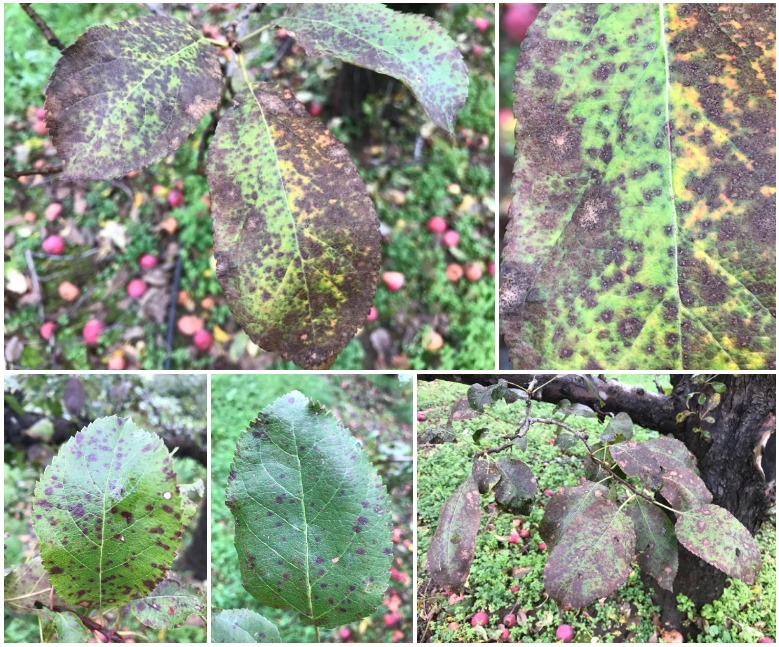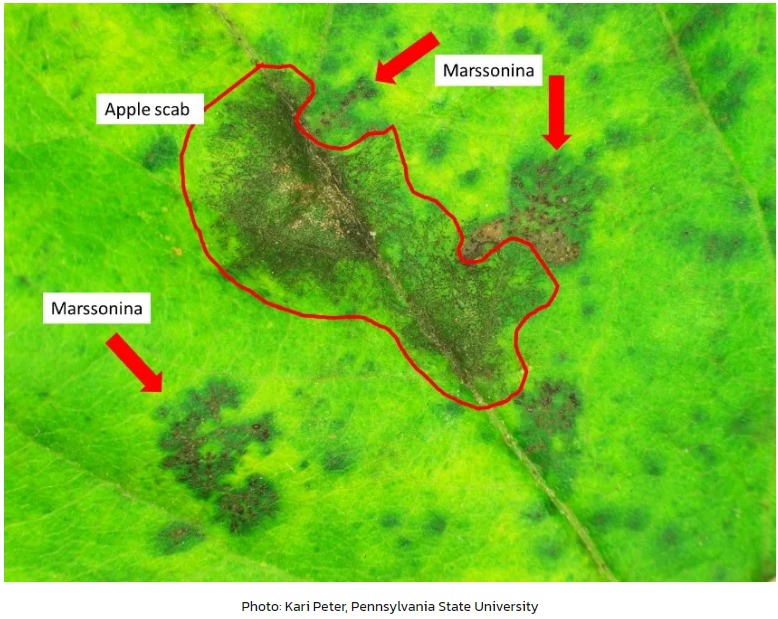Recent surveys of some Ontario apple orchards this fall have confirmed the presence of Marssonina (Diplocarpon) blotch in Gala and Empire blocks. This disease could become a concern for Ontario apple growers as it seems it may be able to build up in orchards, especially with reduced late season fungicide applications.
If you suspect Marssonina (Diplocarpon) blotch in your orchard and would be interested in participating in a provincial survey, please email or call/text:
Kristy Grigg-McGuffin kristy.grigg-mcguffin@ontario.ca, 519-420-9422
Katie Goldenhar katie.goldenhar@ontario.ca, 519-835-5792
What Is It?
Marssonina (Diplocarpon) blotch of apples is caused by the fungus Marssonina coronaria and was first identified in Ontario in the early 1900s. Despite this, Marssonina (Diplocarpon) blotch has been sporadic in Ontario apple orchards. In recent years, eastern states including Pennsylvania and New York have identified an increase in this disease causing premature defoliation, resulting in lower tree health and yield loss. When foliage infection is severe, fruit lesions can occur, although they are uncommon.
What Does It Look Like?
Symptoms typically appear mid-summer on the upper surface of mature leaves. This fungus needs a long duration of leaf wetness to infect, and symptoms can take as long as 40-45 days after infection to appear.
Lesions start small (5-10mm), have a greyish, brown centre with a darkened, purple border. As the infection progresses, lesions darken and coalesce, with the surrounding tissue turning yellow, resulting in premature defoliation. At any stage of infection, when examined closely with a hand lens or dissecting scope lesions contain raised black dots or bumps which are the fruiting bodies of the fungus.

To distinguish this disease from scab lesions, the image below shows the two diseases on a mature leaf. Apple scab lesions are more web-like and do not contain the black bumps.

Fruit lesions are less common but can be found on trees with severe foliar infection. Fruit spots are small, dark brown/black and stay on the fruit surface with minor indentation.

How Can It Be Managed?
This fungus overwinters in infected leaves in the orchard. Sanitization is important in limiting the disease, reducing the inoculum for disease occurrence. This includes fall and/or spring urea application and flail mowing.
There are no registered fungicides in Canada, however research shows that Marssonina (Diplocarpon) blotch is susceptible to most conventional apple scab fungicides. Captan and mancozeb have shown excellent efficacy against this disease, but both have been recently re-evaluated and application numbers reduced, which could lead to an increase of this disease in Ontario.
Cultivars differ in their susceptibility to Marssonina (Diplocarpon) blotch:
Click here to see more...